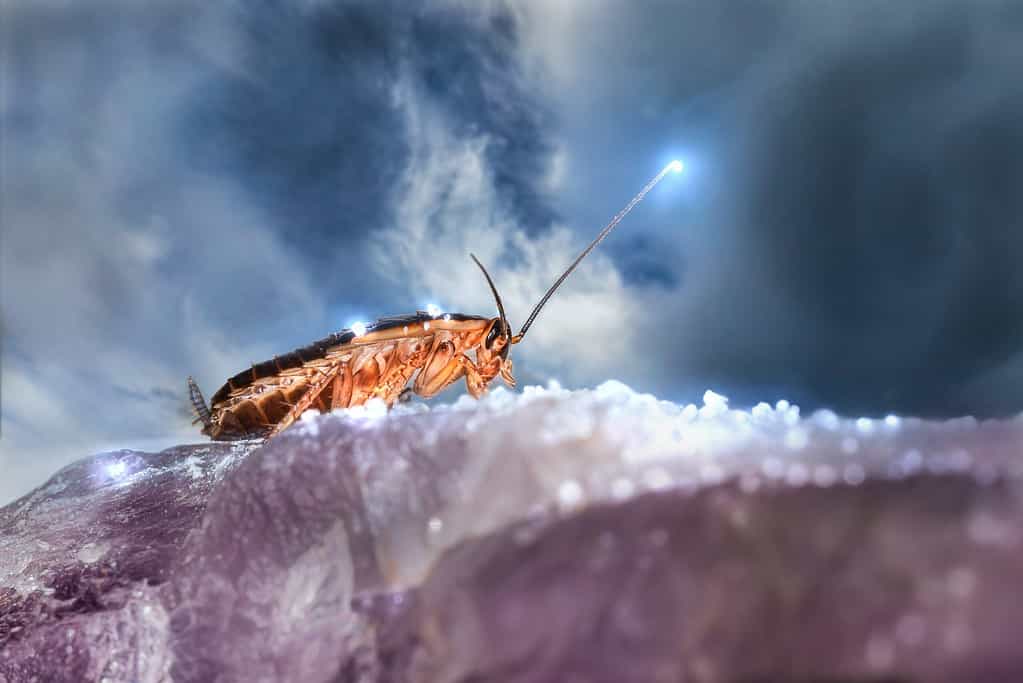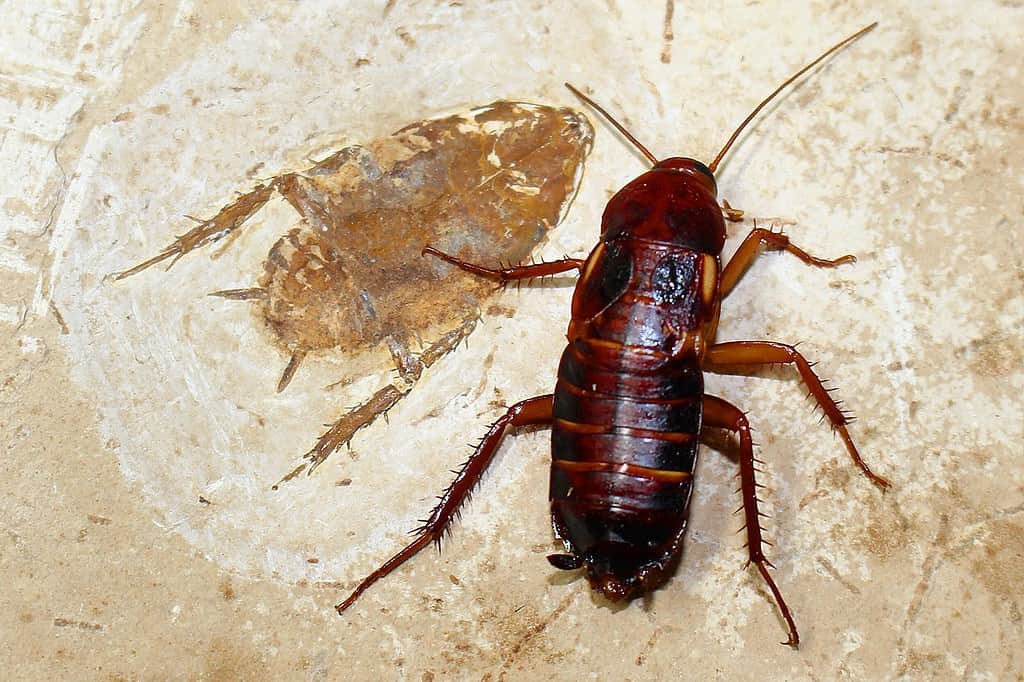Wherever animals can live, cockroaches have also found a way to survive. Nature and evolution have endowed these creatures with great survivability, but they’ve also granted the cockroaches (or rather, some of them) another remarkable ability: flying.
Not all cockroaches fly — in fact, most don’t, despite having wings. But a few of them do and are actually decent fliers, although they tend to only stay in the air for brief amounts of time; others can barely fly and are more adept at gliding. Flying and cockroaches have a weird relationship that often involves an unlikely partner — temperature.

Do cockroaches have wings?
Most roaches have wings, but they don’t necessarily use them for flying. Researchers aren’t really sure why some have wings and some don’t, but even among those who do have wings, sometimes, it doesn’t make sense to use them for flying. For instance, many cockroaches spend a lot of time crawling under soil or in logs, situations where wings are not only unhelpful, they’re counterproductive.
So in this regard, not all cockroaches are the same, and the variation between the wings of different species can be massive. A Central and South American species called Megaloblatta blaberoides has the largest wingspan, reaching almost 19 cm (over 7 inches). Meanwhile, Attaphila cockroaches that live with colonies of leaf-cutter ants have wingspans of 3.5 mm in length.
“Cockroaches are in the group called Pterygota, or winged insects, and fly to disperse to new areas and to escape predators,” explains says Jessica Ware, evolutionary biologist and entomologist in an email to ZME Science. She is the associate curator of invertebrate zoology at the American Museum of Natural History, New York. “Some species of cockroaches do not have wings while others have large wings.”
The Pterygota group first emerged in a period called the late Carboniferous, some 200 million years before the time of T. Rex. According to one hypothesis, cockroaches (or rather, “roachoids”) evolved even earlier than that, during a period called the Devonian — before even the earliest dinosaurs emerged.

So cockroaches are ancient, they’ve gone through a lot in their evolutionary history, and they’ve adapted and changed over the years. But still, despite this, they’re among the more primitive insects and have few special adaptations.
Cockroaches that do have wings have two pairs of wings: the first one is rough and protective, acting as a shield, while the second one is, in some cases, used for flying.
Can cockroaches fly?
Some cockroaches, like the Asian cockroach, are strong fliers. The wood cockroach can also fly with ease. But other cockroaches are more likely to use their wings for gliding.
It’s not clear why, but most cockroaches don’t fly. Presumably, the evolutionary advantages that drove them to develop wings and fly in the first place just aren’t there anymore. But there’s another element that plays into cockroach flight: temperature.
“Some species, like the common American cockroach, fly only at higher temperatures, which explains why we only see them flying here in NY when the summer heat is in full effect,” explains Ware.
Cockroaches, like all insects, are cold-blooded. This means they need external heat to function, and their activity rate increases with the temperature. If the thought of a flying cockroach seems weird and terrifying, the odds are you live in a colder climate, probably in the northern hemisphere. In warmer climates, flying cockroaches are way more common.
That’s why, if you see a cockroach fly, it’s more likely to be in the summer — and pretty much every summer, there’s the occasional panic-inducing news about cockroaches flying. Cockroaches also have few reliable ways to release heat, so even though they like the hot, humid weather, when it gets too hot, they may feel the need to escape the heat as quickly as possible, hence the fly-glide.
But don’t expect cockroaches to take to the skies. Especially in cities, cockroaches have adapted to walk so they’re reluctant to use their wings — they only do it when they feel they absolutely must. Most commonly, this involves escaping a predator (or a human wanting to squash them) or finding a mate. Indoor, cockroaches almost never fly. Even outdoors, they rarely do.
So if you feel like a cockroach is flying towards you, the odds are it’s not actually drawn to you or anything like that, it’s just bad at flying, and possibly more gliding than flying. It’s not dangerous; gross, yes, but not particularly dangerous. Cockroaches generally don’t bite, and the only real problem they can cause to humans is contamination. So if you come in contact with a cockroach, wash or disinfect that area if you want to be extra safe, and you’re good to go.
The bottom line
So flying cockroaches are not that uncommon; most don’t want to fly, but if you see one flying, there’s no reason to freak out. They tend to fly in warmer weather, and flight is most commonly a survival mechanism rather than a common occurrence. A good example of this is the American cockroach (which can be identified by its large size and red-brownish color). American cockroaches are capable of flying but rarely do — and when they do, it’s usually in the heat.
What’s more interesting is that we don’t really know why some cockroaches fly and have wings and others don’t. It’s possible that even in cockroaches that don’t fly, wings are useful because they prevent them from getting stuck on their back and offer a bit of extra protection.
“We don’t really know what drives some to be wingless, but for example, the roaches which go underground and in logs tend to not have wings,” Ware tells ZME Science. She adds that she is currently working on the evolution of different cockroach wing types and how some roaches came to be wingless.
We usually consider cockroaches pests, and it’s not hard to understand why. But cockroaches are remarkable creatures that have been around for hundreds of millions of years — in fact, part of the reason why we dislike them so much is because of their survivability. And they have adapted and changed multiple times throughout their history. There’s much we don’t know about them and plenty of things to learn, their relationship with flying is just one of them.


